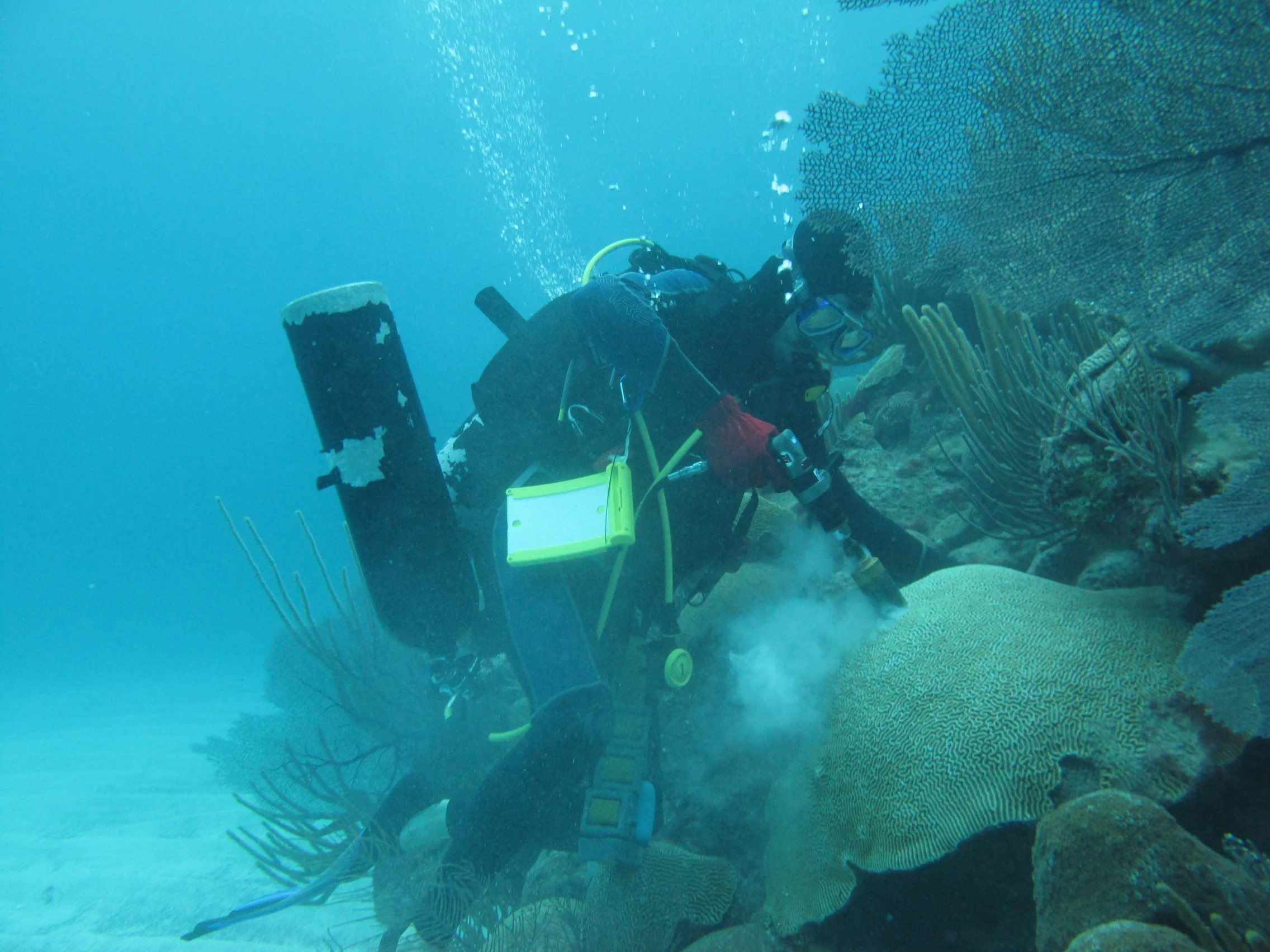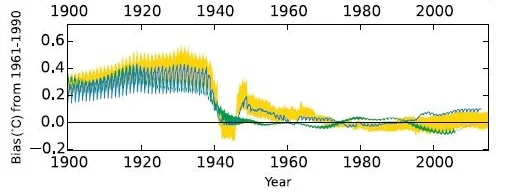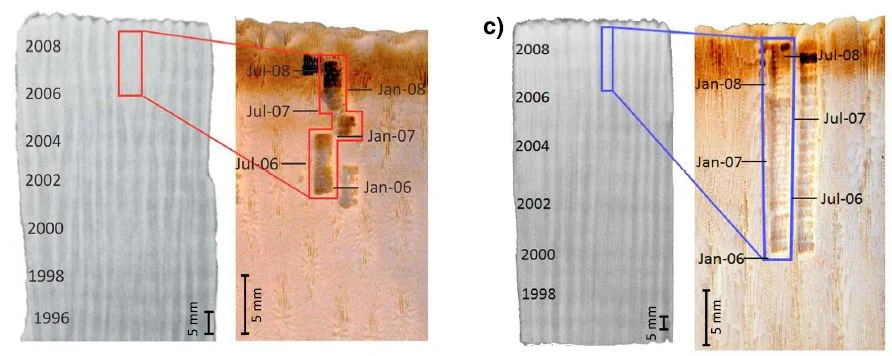The accurate determination of the magnitude of anthropogenic climate change depends critically on the availability of reliable measurements. The further we go back over the last 100-200 years the less reliable these measures become. This is particularly true for ocean pH where we only have about 20 years of data of very sparse data.
One way to improve this situation is to use geochemical proxies, like boron isotopes and Li/Mg ratios, applied to annually banded marine carbonates like corals, to fill in this gap.
Key Questions
1. Can we use geochemical techniques to reconstruct the magnitude of historical ocean acidification (OA)? What does this historical acidification tell us about how organisms have already been impacted by OA?
2. Can we use geochemical proxies to reconstruct sea surface temperature (SST) over the last 100-200 years? What does this tell us about the accuracy of bias corrections applied to historical measurements?
How do we do it?
The magnitude of historic ocean acifidication (i.e. the last 100-200 years) at any one location is unknown due to the complete lack of seawater pH measurements beyond the 1980's.
While records of SST exist spanning this interval, they were rarely taken as part of a scientific endeavour and the technology used evolved considerably over time (from canvas to rubber buckets, to engine room intakes to satellites and Argo floats). This causes large, and uncertain, biases (see here).
We apply cutting edge isotopic and trace element techniques to annually banded tropical corals and other marine carbonates (e.g. coralline algae) to reconstruct ocean pH (using d11B) and ocean temperature (Sr/Ca, Li/Mg, Sr-U) over the last 100-200 years.
By reconstructing the past environments experienced by these marine calcifiers we can also gain valuable insights into how historic climate and environment change has already influenced these important ecosystem engineers.
Recent Publications
Hughes, H. P., Thompson, D., Foster, G. L., Lees, J., Surge, D., and Standish, C. D., 2024, Synthetic and practical reconstructions of SST and seawater pH using the novel multiproxy SMITE method: PLOS ONE, v. 19, no. 6, p. e0305607, https://doi.org/10.1371/journal.pone.0305607
Shaw, K. M. M., Standish, C. D., Fowell, S. E., Stewart, J. A., Castillo, K. D., Ries, J. B., and Foster, G. L., 2024, Century-Long Records of Sedimentary Input on a Caribbean Reef From Coral Ba/Ca Ratios: Paleoceanography and Paleoclimatology, v. 39, no. 5, p. e2023PA004746, https://doi.org/10.1029/2023PA004746
Fowell, S, Foster, G.L., Ries, J., Castillo, K.D., de la Vega, E., Tyrrell, T., Donald, H.K., Chalk, T.B. (2018) Historical trends in pH and carbonate biogeochemistry on the Belize Mesoamerican Barrier Reef System, Geophysical Research Letters, 45, doi: 10.1002/2017GL076496.
Mollica, N.R., Guo, W. Cohen, A.L., Huang, K.-F. Foster, G.L., Donald, H.K., Solow, A.R. (2018) Ocean acidification affects coral growth by reducing skeletal density, Proceedings of the National Academy of Sciences, 115(8) 1754-1759, doi.10.1073/pnas.1712806115
Fowell, S.E., Sandford, K., Stewart, J.A., Castillo, K.D., Ries, J.B., and Foster, G.L., (2016) Intrareef variations in Li/Mg and Sr/Ca sea surface temperature proxies in the Caribbean reef-building coral Siderastrea siderea. Paleoceanography, 31 (doi: 10.1002/2016PA002968)
DeCarlo, T.M., Gaetani, G.A., Cohen, A.L. Alpert, A.E., Foster, G.L., Stewart, J. (2016) Coral Sr-U paleothermometry: unprecedented accuracy of seawater temperature reconstructions by understanding biomineralization, Paleoceanography, 31, (doi:10.1002/2015PA002908).







